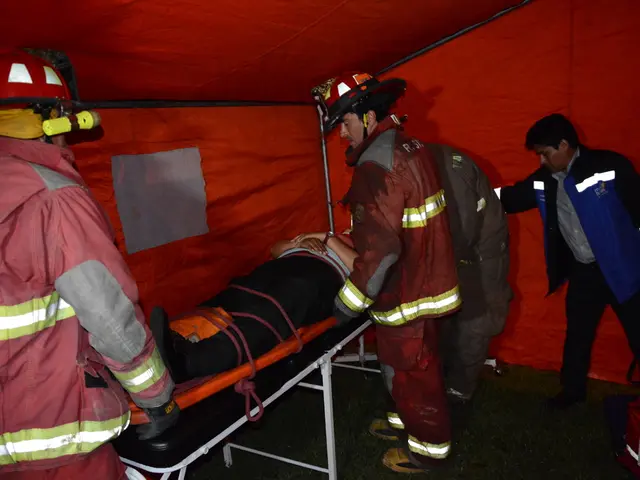Restless legs syndrome causing night-time leg discomfort? Learn about its potential causes.
_Sign up for "Sleep, But Better" Newsletter to learn how to get a good night's rest with our seven-part series packed with helpful tips for a better sleep experience.
Remember the sleepless nights with Karla Dzienkowski's daughter, who complained of an uncomfortable, stabbing sensation in her legs that made her walk to alleviate it? At just 11 years old, this preteen stumbled through school, fell asleep during family outings, and became irritable. Three long years later, her family discovered the source of her discomfort: Restless Legs Syndrome (RLS).
RLS is a disorder that affects approximately 4-29% of adults in industrialized nations, yet many people remain unaware of its symptoms and proper management. According to Dzienkowski, a nurse and executive director of the Restless Legs Syndrome Foundation, identifying RLS can be challenging, and many healthcare providers lack sufficient knowledge to diagnose and treat it effectively.
So, let's dive into what you should know about RLS:
What is RLS?
Essentially, RLS involves an uncontrollable urge to move your limbs, often accompanied by uncomfortable feelings like tingling, burning, or aching. These sensations typically focus on the legs, sometimes spreading to the arms and are usually exacerbated when sitting or lying down. Dr. John Winkelman, a sleep specialist, notes that symptoms usually worsen during rest, particularly at night, interfering with a good night's sleep.
In moderate to severe cases, RLS occurrences can disrupt sleep several times per week, and in extreme instances, nightly symptoms can delay sleep for hours.
Who is at risk?
Genetics and iron levels play crucial roles in determining who develops RLS. The condition often runs in families, with genetic markers contributing about 20% to the likelihood of developing RLS.
Those with iron deficiencies are also at a higher risk for RLS—groups that may experience iron deficiency include pregnant women, individuals on dialysis, people with anemia, and vegetarians. Additionally, taking selective serotonin reuptake inhibitor antidepressants may increase vulnerability to RLS.
Interestingly, RLS is more prevalent in women than men and is more common in older age groups. Children can also develop RLS, just like Karla Dzienkowski's daughter.
Management and Treatment
To manage RLS, it's essential to identify factors contributing to symptoms. Alcohol, certain medications, and simple sugars may exacerbate symptoms, so minimizing exposure to these substances is helpful.
Iron supplements or intravenous iron infusions can alleviate symptoms in cases of low or borderline low iron levels. Those seeking relief can also adopt home remedies such as using hot or cold packs, massages, walks, or engaging in mind-stimulating activities to reduce symptoms.
When lifestyle changes and iron supplementation don't provide relief, doctors may prescribe medications like gabapentin or pregabalin. Historically, dopamine agonists were the first line of medication for RLS; however, their prolonged use can worsen symptoms, and they are now prescribed less frequently.
If symptoms remain severe, doctors may prescribe low-dose, long-acting opioid medications. It's essential to consult a doctor if you experience discomfort in your limbs that induces the need to move, especially if this disrupts your sleep. While not all healthcare providers are well-versed in RLS, discussing symptoms with a sleep specialist and having your iron levels tested can help diagnose and treat the condition more swiftly, ultimately improving your overall well-being.
- The uncomfortable, uncontrollable urge to move one's limbs, often accompanied by sensations like tingling, burning, or aching, is a symptom of Restless Legs Syndrome (RLS), a medical condition that can interfere with health and wellness, particularly sleep.
- Iron deficiencies, along with certain genetics, medications, and lifestyle factors, can put individuals at higher risk for developing Restless Legs Syndrome (RLS), a disorder that affects the quality of sleep and overall health and wellness.




